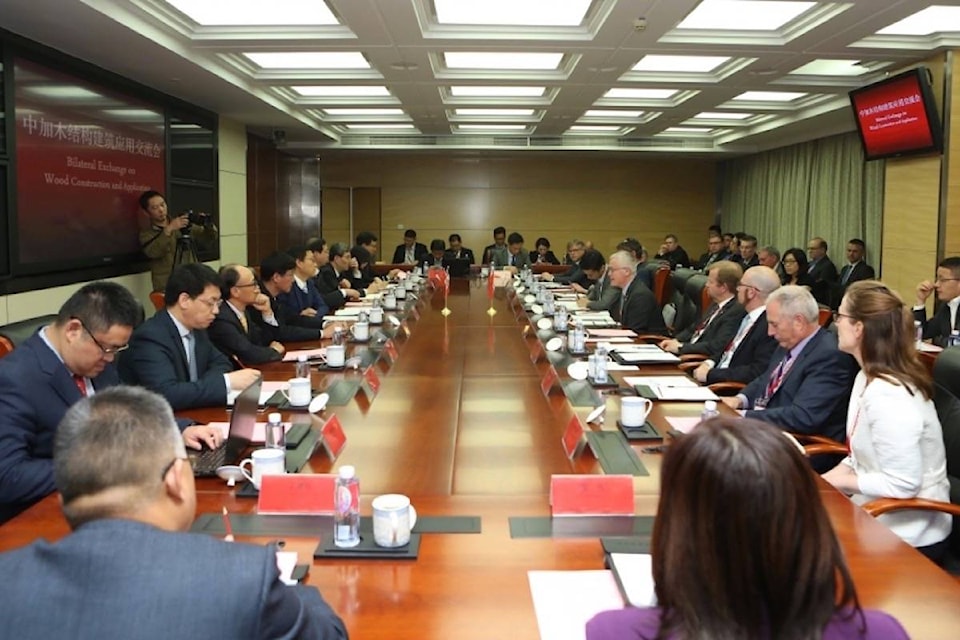B.C. Forests Minister Doug Donaldson is back from his first wood industry trade mission to China and Japan, an annual journey I was fortunate to go on last year.
China especially is an eye-opening experience, and depending on the smog, an eye-irritating experience as well. The sheer scale of urban development around cities like Shanghai and Nanjing is striking – they don’t build a high-rise, they build eight or 10 or 12 at a time.
Nanjing is the commercial centre of Jiangsu province, where the Chinese central government has ordered a pilot project to phase in wood and engineered wood, starting with roof trusses and pre-fabricated infill walls for concrete buildings. They’re working with B.C.-developed wood construction because “it’s energy efficient, it’s green, it’s light, it’s fast,” says Rick Jeffery, chair of the national industry group Canada Wood and a veteran of Asia trade.
This is important in a vast country that is not only choked with pollution, it’s running low on limestone, a key component of concrete. Based on 2016 rates of consumption, China is using as much concrete in two years as the U.S. would in a century, and that’s with their growth slowed from its peak a few years ago.
In a phone call from the Tokyo stop last week, Donaldson said once the government decides on an action, “things happen quickly in China.” The national MOHURD directs the provinces and essentially controls construction.
Donaldson noted that President Xi Jinping, in his recent sweeping address to the 19th Congress of the Communist Party of China, emphasized clean, pre-fabricated building systems.
Things don’t happen quickly in wood industry talks with the U.S., where the central government isn’t ruled by dictators but by its lumber industry lobby. Using the same subsidy accusations that have failed repeatedly in international trade rulings, the U.S. has forced Canadian softwood producers to fork over $500 million in countervailing and anti-dumping duties since last spring alone.
This American shakedown of Canada has been going on for decades. In the “managed trade” arrangement that ran from 2006 to 2015, Canadian lumber mills paid punitive duties averaging about 11 per cent. Now, after a preliminary ruling was generously scaled back by the U.S. Department of Commerce, our producers are paying about 20 per cent, directly into the pockets of U.S. lumber barons.
B.C. Council of Forest Industries CEO Susan Yurkovich has repeatedly pointed out that this U.S. protectionism doesn’t work. It can’t work, because the U.S. doesn’t produce enough lumber to meet its own construction demand. If it blocks lumber from B.C., which represents half of Canada’s exports south, it will have to buy lumber from overseas.
The real purpose of this U.S. industry trade bullying is to push up the price of their products, and that is working extremely well. U.S. lumber and structural panel prices hit a near record last week.
The good news for B.C. is that the price is high enough that sales to the U.S. are easily covering the cost of duties. That’s being passed on to U.S. builders and homeowners.
One of these days, Trump and his team of trade geniuses may figure this out and begin to consider free trade in lumber. Until then, Canada and B.C. are well advised to continue working on the Asia market.
